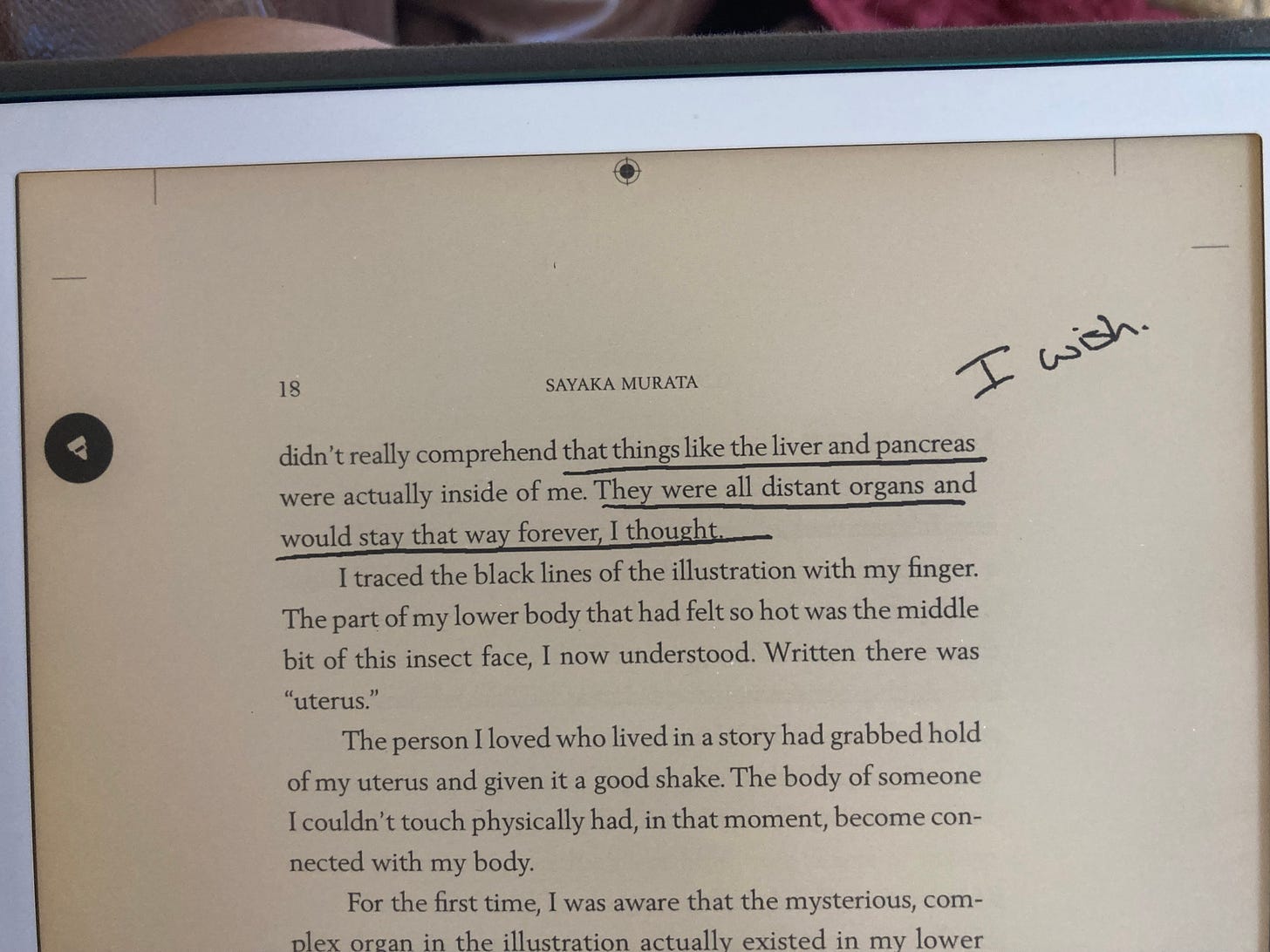new writing: sayaka murata
at wsj
Sayaka Murata is a very strange writer who is obsessed with normality.1 I was so pleased to be able to review her new book Vanishing World for the Wall Street Journal:
Through her fiction, Ms. Murata has resolutely explored the strangeness of the cultural practices we otherwise consider ordinary. “Vanishing World,” originally published in Japanese in 2015, is the writer’s most recent novel to be translated into English. It chronicles the life of Amane, a narrator with an unusual degree of adaptability, as her society changes around her. No matter how intense the transformations, and no matter how much Amane thinks she will object to them in advance, she discovers she can seamlessly adjust and will nearly forget she ever lived a different way.
To expand slightly: what draws Murata to the “normal” is its essential arbitrary quality. What is “normal” can change dramatically over the course of a lifetime, yet what is normal, while it’s normal, seems not only as if it were always there but as if it will always be that way.2 In her short story “Life Ceremony,” for instance, Murata imagines a world that has come to embrace eating the dead. Its heroine can still remember a time when eating human flesh was an unspeakable taboo. She has no objection to cannibalism but remains loathe to partake herself, because it’s the change in values that truly bothers her. In another short story, fine furniture and clothing are made from human skin, bones, nails, and hair. The one character who finds this practice disgusting is regarded as a crank, and by the end, confronted by a veil made from his father’s skin, he’s come around. How can something be so unquestionable and yet so arbitrary and changeable? That’s the trouble.…


